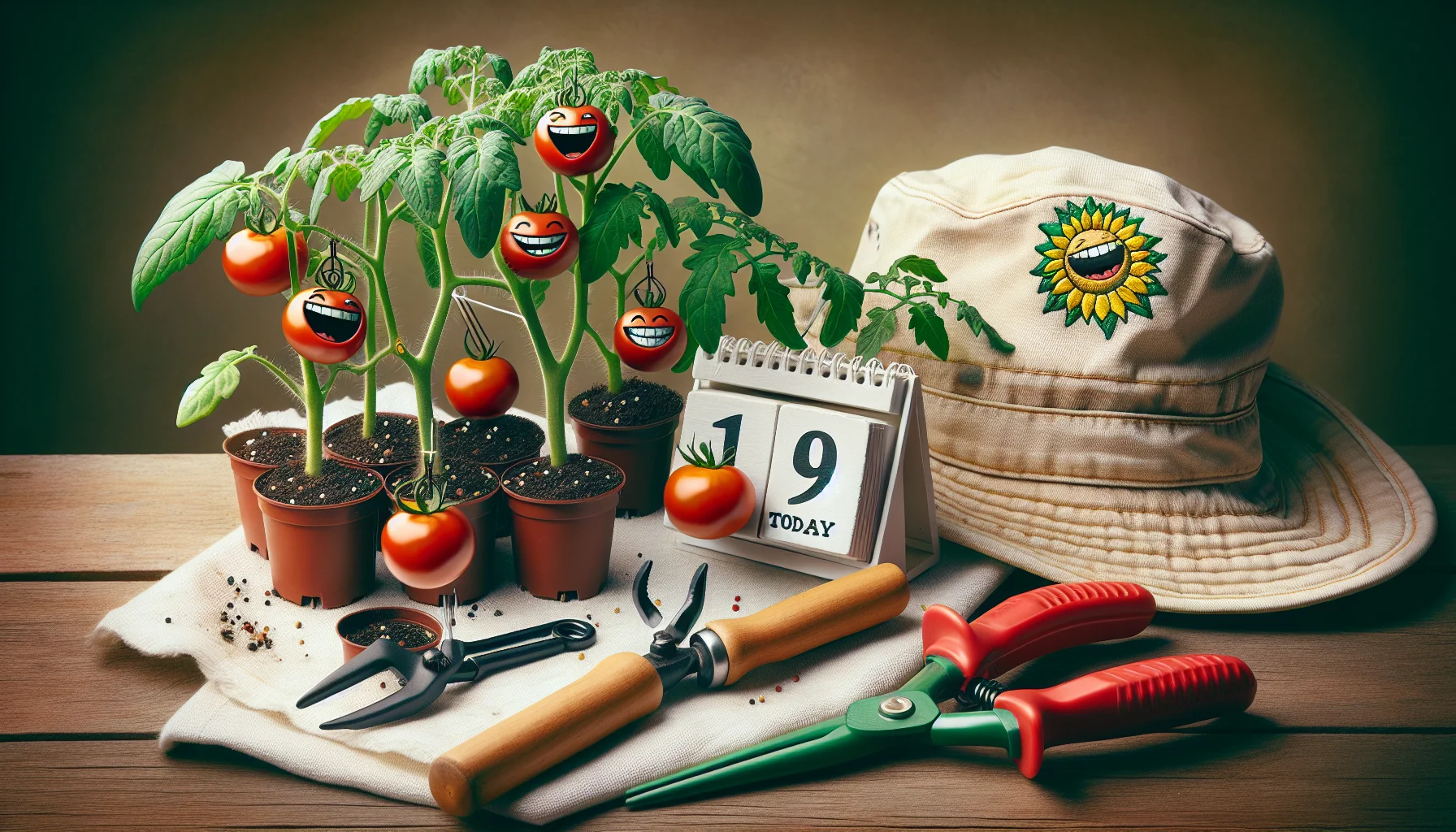When to start tomatoes indoors Quiz
Test Your Knowledge
Question of
When to Start Tomatoes Indoors
Gardening is an art that requires patience, care, and a good understanding of timing, especially when it comes to growing tomatoes. Starting your tomato seeds indoors is a crucial step for gardeners looking to get a head start on the growing season. The timing of this process can significantly influence the health and productivity of your tomato plants. By starting seeds indoors, gardeners can ensure their plants are strong and ready to transplant after the last frost, leading to a bountiful harvest.
Understanding Your Growing Zone
For gardeners, knowing your local growing zone is crucial, especially when it comes to starting tomatoes indoors. This is because your growing zone determines the last frost date in your area, which in turn influences the best time to sow tomato seeds indoors. Typically, tomato seeds should be started 6 to 8 weeks before the expected last frost date. Planting too early or too late can affect the seedlings' growth and ultimately the timing and yield of your tomato harvest. By understanding your growing zone, you can optimize your planting schedule to ensure your tomatoes have the best start possible.
The Ideal Time to Start Tomatoes Indoors
- Zone 3: Start seeds indoors around April 10th to April 24th.
- Zone 4: Begin around April 3rd to April 17th.
- Zone 5: Start seeds indoors approximately March 25th to April 8th.
- Zone 6: Begin around March 15th to March 29th.
- Zone 7: Start seeds indoors about March 8th to March 22nd.
- Zone 8: Begin around February 22nd to March 8th.
- Zone 9: Start seeds indoors approximately February 1st to February 15th.
- Zone 10: Begin around January 15th to January 29th, if growing a cool-season crop, or August for a winter harvest.
Materials Needed to Start Tomatoes Indoors
- Seeds or starter plants
- Seed starting mix
- Containers or seed trays
- Grow lights or a sunny window
- Watering can or spray bottle
- Thermometer to monitor temperature
- Humidity dome or plastic wrap
- Fertilizer
- Heating mats (optional for warmth)
- Fan for air circulation (optional)
Step-by-Step Guide to Planting Tomato Seeds
- Gather your supplies, including tomato seeds, seed starting mix, pots, and a watering can or spray bottle.
- Fill your pots with the seed starting mix, leaving about an inch of space at the top.
- Moisten the soil with water using a watering can or spray bottle until it's damp but not soaking wet.
- Plant 2-3 tomato seeds in each pot, placing them about 1/4 inch deep into the soil.
- Cover the seeds lightly with soil and gently press down to ensure contact between the seeds and the moist soil.
- Place the pots in a warm location that receives plenty of indirect sunlight. Use a heat mat if necessary to maintain a consistent soil temperature.
- Keep the soil moist but not waterlogged by lightly spraying or watering when the top layer of soil feels dry to the touch.
- Once the seedlings emerge, move the pots to a location where they can receive more direct sunlight or use grow lights to ensure they get enough light.
- Thin the seedlings, keeping only the strongest one in each pot by carefully snipping the weaker seedlings at soil level with scissors.
- When the seedlings have grown several sets of true leaves and are strong enough, begin to harden them off by gradually exposing them to outdoor conditions over a week.
- Transplant the hardened-off tomato seedlings into your garden or larger pots, making sure to space them out according to the recommended spacing for the variety.
Caring for Your Tomato Seedlings
Once your tomato seedlings have germinated, it's crucial to provide them with the right conditions to thrive. First and foremost, they need plenty of light. Place them in a spot where they can receive at least 6-8 hours of direct sunlight daily. If natural light is insufficient, consider using grow lights placed a few inches above the plants. Watering is another critical aspect of their care. Keep the soil consistently moist but not waterlogged, as overwatering can lead to root rot and other diseases. When it comes to temperature, tomato seedlings prefer a warm environment. Aim to keep the ambient temperature around 70-75°F during the day and not below 60°F at night. By meeting these light, water, and temperature needs, you'll help ensure your tomato seedlings grow into strong, healthy plants ready for transplanting.
Transplanting Tomato Seedlings Outdoors
| Step | Description |
|---|---|
| Hardening Off Tomato Plants | Begin 7-10 days before transplanting. Gradually expose seedlings to outdoor conditions by placing them outside in a sheltered location for a few hours each day, slowly increasing their time outdoors to acclimate them to sunlight, wind, and temperature changes. |
| Best Time for Transplanting Based on Growing Zones |
|
| Tips for Successful Transplanting |
|












